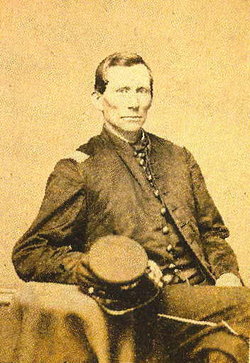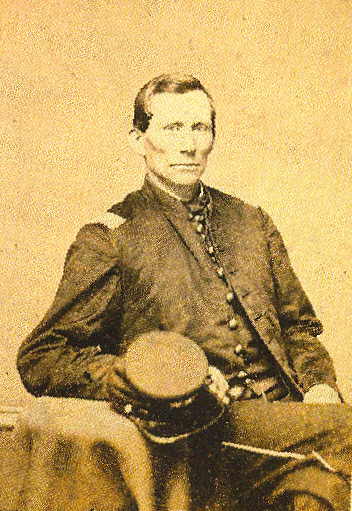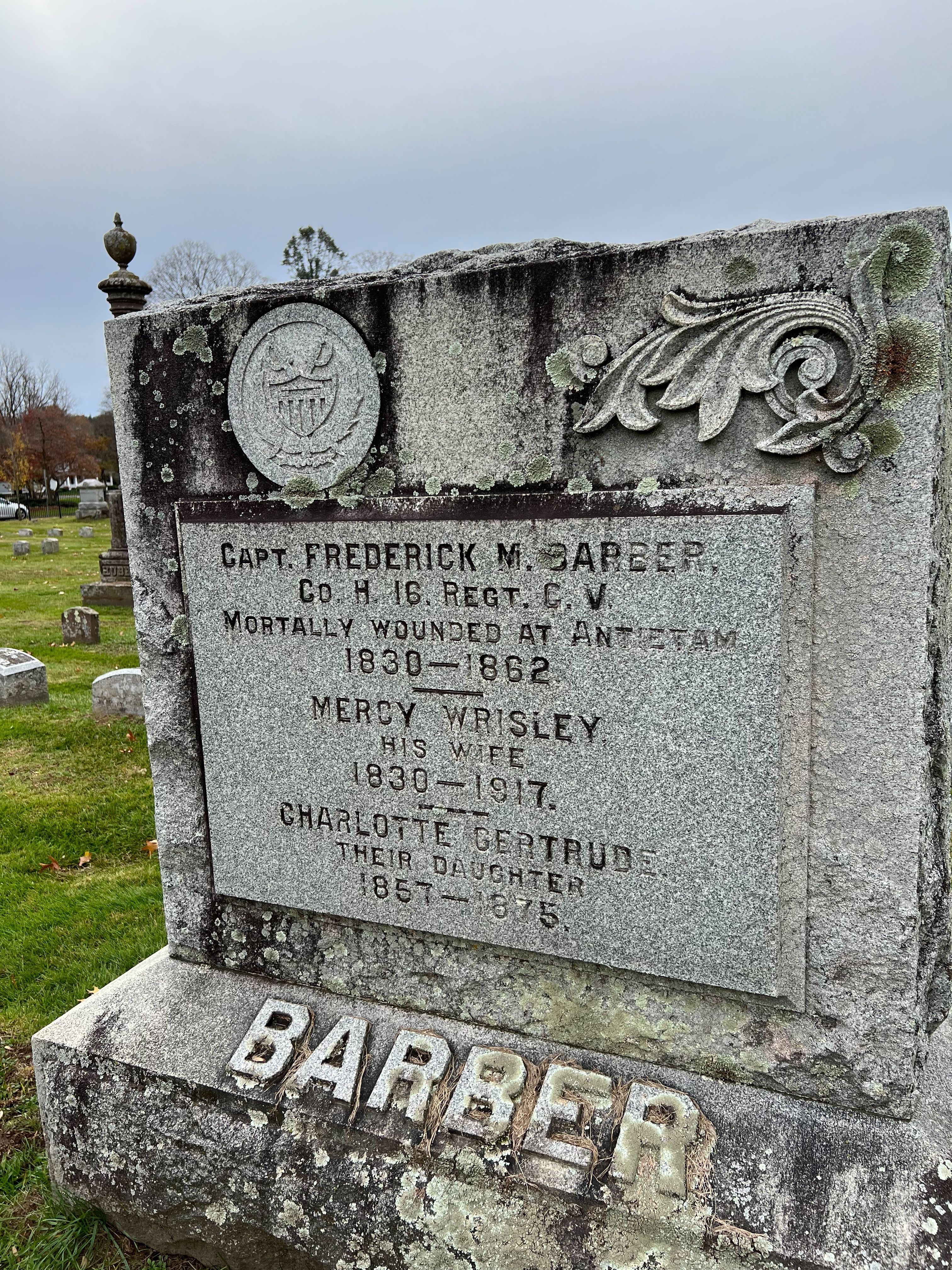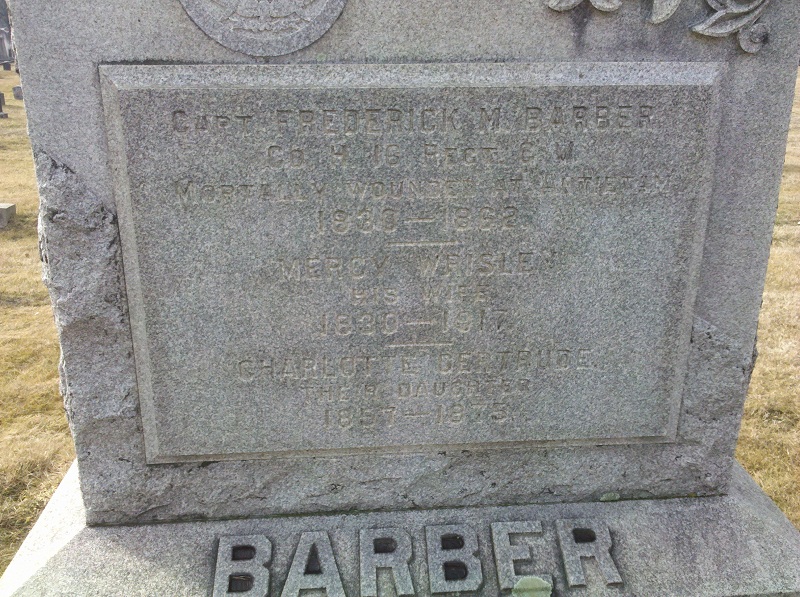Co. H 16th Regt C. V.
New England Historical Genealogical Register 85:159
A surgeon wrote that 16th Connecticut Captain Frederick M. Barber incurred a "minie ball wound to the right femur" when A.P. Hill's battle-ending counterattack crumpled his regiment. The entire leg was amputated, and he died on September 20, 1862.
----------------------------
"Case 207. — Captain Frederick M. Barber, Co. H, 16th Connecticut, aged 32 years, was wounded at Antietam, September 17, 1862, by a musket ball, which entered behind the right trochanter major and shattered the trochanters and neck of femur. He was conveyed to the field hospital of the 3d division of the Ninth Corps. His general health was good, and there was but little shock. There was no swelling of the soft parts; the fracture was accessible to exploration, and appeared limited to the epiphysis. The case was one in which excision seemed peculiarly applicable, and, after a consultation of several surgeons of the division, that operation was decided upon. On the morning of September 18th, the patient being anaesthetised by chloroform, Surgeon Melancthon Storrs, 8th Connecticut, made a straight incision four inches long, passing through the wound of entrance. The comminuted fragments of the neck and trochanter were extracted, the round ligament divided, the head of the femur removed, and the fractured upper extremity of the shaft was sawn off by the chain saw. The edges of the wound were then approximated by adhesive straps, and simple dressings were applied. Little blood was lost, and the patient rallied promptly from the operation, and appeared quite comfortable during the day. Surgical fever soon set in, however; the patient sank rapidly under the constitutional irritation, and died on September 20, 1862." -- The Medical and Surgical History of the War of the Rebellion. Part III, Volume II. (3rd Surgical volume) by U. S. Army Surgeon General's Office, 1883.
Co. H 16th Regt C. V.
New England Historical Genealogical Register 85:159
A surgeon wrote that 16th Connecticut Captain Frederick M. Barber incurred a "minie ball wound to the right femur" when A.P. Hill's battle-ending counterattack crumpled his regiment. The entire leg was amputated, and he died on September 20, 1862.
----------------------------
"Case 207. — Captain Frederick M. Barber, Co. H, 16th Connecticut, aged 32 years, was wounded at Antietam, September 17, 1862, by a musket ball, which entered behind the right trochanter major and shattered the trochanters and neck of femur. He was conveyed to the field hospital of the 3d division of the Ninth Corps. His general health was good, and there was but little shock. There was no swelling of the soft parts; the fracture was accessible to exploration, and appeared limited to the epiphysis. The case was one in which excision seemed peculiarly applicable, and, after a consultation of several surgeons of the division, that operation was decided upon. On the morning of September 18th, the patient being anaesthetised by chloroform, Surgeon Melancthon Storrs, 8th Connecticut, made a straight incision four inches long, passing through the wound of entrance. The comminuted fragments of the neck and trochanter were extracted, the round ligament divided, the head of the femur removed, and the fractured upper extremity of the shaft was sawn off by the chain saw. The edges of the wound were then approximated by adhesive straps, and simple dressings were applied. Little blood was lost, and the patient rallied promptly from the operation, and appeared quite comfortable during the day. Surgical fever soon set in, however; the patient sank rapidly under the constitutional irritation, and died on September 20, 1862." -- The Medical and Surgical History of the War of the Rebellion. Part III, Volume II. (3rd Surgical volume) by U. S. Army Surgeon General's Office, 1883.
Family Members
Advertisement
Records on Ancestry
Advertisement











